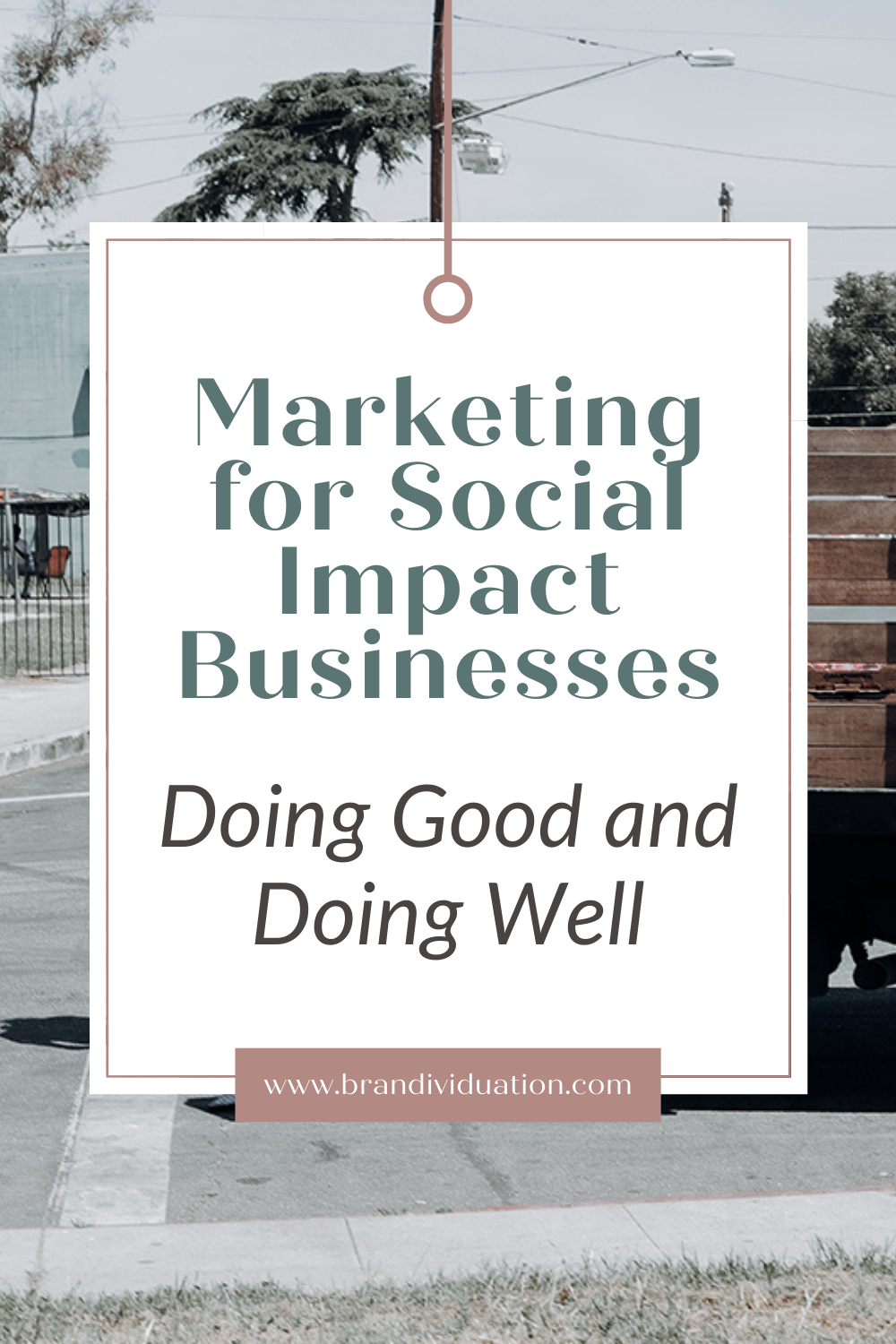We all have the potential to leave the world a little better than we found it. Every single one of us can. Whether you touch one life or millions, the difference you are capable of making matters.
There are some people, though, that have a unique ability to see the root cause of a major social issue, see the solution that is needed, and, most importantly, take the steps needed to make that solution come to life. These are the change-makers, the action-takers, and the impact creators.
I’ve always been pulled toward these people.
People who don’t just say they care about something, but show it.
People who don’t just talk about problems, but come up with innovative solutions.
People who care far more about what’s right and just than what’s easy or enjoyable.
People who care about substance and value over superficiality and performance.
People who put their purpose above their profit, but use their profit to do good in the world.
That’s why I get so invested in every single thing I do and give it my all. Because if I’m showing up for the change-creators we work with, it allows them to show up fully for those they serve or their mission.
There’s really nothing more disappointing than seeing the potential of a leader, team, or brand and knowing they could be making an even bigger difference if only more people understood what they do and why it’s important. The lack of clarity in their message or lack of an appropriate platform is often the only thing holding them back.
Social Impact Entrepreneurs Have to Be Known to Do Good and Do Well

A couple years ago, I met an incredible entrepreneur. She had built a suite of six businesses and nonprofits to address what she saw as the biggest social issues in Richmond, Virginia. By the time we finished our first project together, just a couple short months later, she had two more organizations and a neighborhood revitalization project under way.
The problem was people didn’t know about or understand these critical programs unless they got involved in them on the service side or found out by word of mouth. So, they had a hard time expanding services, funding programs, obtaining new contracts so they could spread into other areas, and increasing revenue.
Their website, which was intended to house all the brands, had a very vague and confusing explanation of what they did. They had no marketing plan for the parent brand or any of the individual organizations. They rarely posted on social media for any of the brands. And even if they had, they weren’t clear on how to explain exactly what they offered to the community. They didn’t even have collateral to present to potential stakeholders, partners, or collaborators, so it was difficult to have conversations with others who could help them reduce or eliminate the social issues they were addressing.
As you can probably guess, the lack of clarity in their message and platform left their efforts largely underrecognized and left them missing out on a lot of opportunities for growth of impact and revenue.
They had to work so much harder for every gain they needed – support, money, program partnerships, visibility, and more.
But, once they were clear on who they needed to be speaking to, how to talk about the importance of their mission, and what marketing strategies to put in place first, it became much easier to tell their stories of social impact and grow awareness for their causes.
For them and other purpose-led businesses, the key in unlocking the clarity and power of their social impact is in the stories of their brand and the lives they impact.
For Social Good Corporations, the Power is in the Stories

The entrepreneur I just mentioned follows my personal and business platforms. She once told me that I’m a really great storyteller. She shared that I say things in a way that makes her care about it. I position it in a way where I’m bringing something to light in a positive way, without calling anyone or anything out – which motivates her.
That’s exactly what every single mission-driven brand has to do. Share your stories and purpose in a positive way so you can give people the hope and motivation they need to act on opportunities to make the world a better place.
Without awareness of the social issues that negatively impact humanity and the world, understanding of the underlying causes for those social issues, presentation of the appropriate solutions to those issues, and motivation to act on problem-solving activities, people will feel lost in terms of understanding how profit and purpose come together for your business.
That’s a problem for your social impact focused business because if your brand and communications are outwardly only focused on the revenue-generating offers, people won’t be aware of your bigger purpose and contribution to society. Without that awareness, they will be less motivated to purchase from or support your brand over profit-driven businesses.
Consumers Demand More Social Impact From Businesses
We’re getting closer every day to a business ecosystem where the impact-led benefit corporations, b corps, L3Cs, and other mission-focused for-profit businesses will make the profit-only led businesses obsolete. There’s no question – social enterprises and social entrepreneurship are on the rise.
People are increasingly becoming more interested in and vocal about the need for a global ecosystem focused on systematic positive change addressing the world’s biggest challenges. Millenials and even some GenXers, especially, are demanding we move from profit-based capitalism to social capitalism.
Consumers – the people of the world – have the buying power, which means the people hold the power to change the way business is done.
That means that people are going to pay attention to, recognize, and buy from brands that are communicating the impact they’re making in their local and global communities.
Where Social Impact focused Brands Struggle
But, for brands that haven’t found the right way to position their value and impact, it’s going to be a struggle to gain the kind of traction they’re looking for. There’s usually a disconnect for these brands between the profit-centred activities and messages and the impact-focused vision and goals.
There could be many reasons why their message is disconnected from their mission.
The mission isn’t usually clear or visible. Often it’s buried on an about page – or worse, a page that isn’t easily found on their site. But, they don’t often build their overall purpose and stories of impact into ongoing messaging and marketing.
Sometimes, the message becomes disconnected over time. This often happens when a business grows in terms of the team size, team roles and responsibilities, offers, audiences served, and shifts in focus.
There are other times when partnerships and collaborations are formed, but an overall strategy for joining the participants isn’t clear to the teams or their audiences.
When a business changes their organizational model or transitions to a different company structure, this can also happen. For example, when a company changes from a LLP or LLC to a B corp. During the transition, mission drift can happen and then the audience becomes confused.
This can be surprising, because the whole point of moving to or starting with a benefit corporation, L3C, or especially B corp is to have organizational, regulatory, and prestige-earning structures that allow the business to make a validated and proven impact in a more meaningful way and get recognition for doing so.
So, you would think these organizations would ensure their motives, purpose, and value are communicated well across mediums. But, many times these teams overlook or ignore the important work of communicating their value to those who most need to hear it – audiences, stakeholders, potential partners, potential funders, and even employees.
In other cases, the marketing teams grow and content production becomes more complex. As more layers are added into the content marketing activities, misalignment can happen between platforms and messages.
This was the case with a large enterprise B corp in the technology & education field I worked with last year.
A Case Study in Messaging for a Mission-led Business
In 2018, a prominent B corp came to me for a brand voice and tone refresh as part of a larger brand refresh. They had grown so fast that their voice and tone no longer was aligned across mediums.
Prior to our project, the voice and tone of of this company was:
- Safe
- Disjointed between segments
- Incongruent with the voice and tone of video marketing content
- Professional and formal
- Similar to multiple competitors
- Trying to speak in different voices/tones for different segments creates dissonance and compromises trust
The voice and tone needed to be:
- Differentiated
- Representative of SU’s character, mission, and vision
- Appealing to all market segments
- Recognizable and consistent across platforms and mediums
- Reliable and trustworthy by being consistent
Once we completed the project, this client had a clear, aligned voice and tone so they could clearly communicate from a place of authenticity and integrity. The voice of Singularity University now reflects its core values, character, and purpose. The tone nuances developed will appeal to all market segments and represent the brand well.
Although this enterprise has many employees, representatives, and audience segments, it has one defining voice. By adopting the voice and tone defined for them, cohesiveness and consistency is established across all content. This consistency allows audience members, regardless of segment, to easily identify and be inspired by this brand. It will also negate any dissonance that may result from cross-segment encounters.
How to Harness Your For-profit Power to Get Consumers to Care About Your Business
When a social impact focused brand clearly communicates their purpose and value in a consistent cohesive way, they’re able to grow their mission and make their bigger vision a reality much more easily. There’s really nothing more exciting than when a change-creator shares their clarified message or steps up to their new platform and sees a positive response about what they’re doing.
Sometimes the clients we work with have struggled for years to gain traction so they can create the social impact they are looking to make. But, when they get their newly positioned brand and message out there, it all finally connects and makes sense to them, their audiences, and even their personal connections.
Can you imagine how frustrating it is to believe with your whole heart in your purpose, but fail to get others to see why it’s so important? Now imagine how devastating it can be not to be able to help those who need it the most.
The great thing is that there’s a growing number of for-profit cause-based organizations who have the power to make a real lasting difference, locally and globally. Benefit corporations, B corps, L3Cs, and social entrepreneurs are rising up and claiming that power.
The power to solve global challenges.
The power to reduce, and even eliminate, disparities and injustices.
The power to provoke people to action.
The power to cultivate community, despite geographic and socio-economic differences.
The power to change the world.
There’s something about working with the people who are capable of this kind of power that makes what I do matter. I can think back to key memorable moments during many of these projects that touched my life.
When You Share the Good You Do, Your Business Will Do Well
When I was leading the Brandividuation project for a residential reentry program in Richmond, Virginia, I experienced one of these moments. The program exists for people transitioning back to society after prison. They call these people Strivers.
As part of our project, I led a focus group with some of the Strivers. Some had graduated years earlier, some had just entered the program, and there were others somewhere between.
I formed a circle with chairs and began by establishing the group as a safe space for sharing. Some were more open than others. But, what I got out of that experience was so much more than “market research.” I got to hear, understand, and feel what these Strivers had been through. I heard their tales, their fears, their pain, their growth, their gratitude, and more.
I heard about the success stories of people who turned their life around. I heard the inspiring goals of others who had just come into the program. I heard the needs of some who didn’t have other support systems.
What I learned was that this housing program isn’t just a place – it’s a family you never really leave. It’s somewhere people who have made mistakes don’t have to feel judged. It’s a place for acceptance. It’s a place for change. It’s a place for hope.
And that’s the difference a for-profit company can make to individual lives and society.
A for-profit company can take the money they make and use it toward bettering people, communities, and the world.
These are just some of the incredible missions we’ve gotten to help amplify:
- A B corp that helps solve the world’s 12 Global Grand Challenges.
- A suite of LLCs and 501(c)3 businesses that help people returning from prison with housing, food, mental health support, and job security.
- A conscious leadership consultant for CEOs of top businesses to teach corporate social responsibility.
- A solo entrepreneur with an LLC that helps individuals overcome internal beliefs to reach financial stability and empowerment, plus a non-profit that empowers teen girls.
For-profits with a social cause have the potential to change the world.
How the Triple Ps Can Raise Your Triple Bottom Line
For-profit organizations can’t make the social impact they are working toward if they aren’t raising their triple-bottom-line (social, environmental, and financial performance). They won’t raise that triple-bottom-line if their message is unclear or they don’t have an appropriate platform so people know, understand, and see the value in the impact they’re creating.
To make your purpose and value clear, you need the powerful Ps: Purpose, Positioning, and Promotion. You have to be able to bring your mission and profits together to share a bigger Purpose that people will care about. You have to Position your business in the marketplace as one that is serving in a way others aren’t. You have to actively and consistently Promote that position to your target audience segments.
An exercise like the focus group, a brand positioning analysis project, or a market research initiative can reveal the underlying value of the brand and showcase the impact it makes.
In addition to the research and analysis that’s needed to uncover the true value propositions and unique positioning that will help mission-based businesses grow, there are other key assets that are needed.
- Target audience analysis so all key people the brand needs to reach for growth are identified
- Competitive analysis so strengths, weaknesses, and opportunities are identified
- Key messaging and positioning guidelines that help the brand stay clear, consistent, and relevant to target audiences
- A core origin story and supporting stories of impact so there’s a meaningful connection between the brand and its target audiences
- An overall marketing strategy so the brand can leverage the most effective platforms for their specific target audiences with relevant, timely, and attractive value-based content
- A detailed marketing plan and content calendar so the stories of impact, promotions, and value-based content can be intentionally balanced and planned out
All of these collateral pieces are critical for impact-focused businesses to establish a positive reputation and build brand equity.
Possibilities to Bring Your Profit and Purpose Together
Many for-profit social cause organizations don’t even realize how important this kind of foundational work actually is. If they do know how important it is, they may not initiate a project with that focus because they don’t know where to start, aren’t sure if their organization can fit it into their budget, or don’t know when to focus on this important work.
My firm and I have worked with experienced entrepreneurs and businesses who have been creating social impact for up to 15 years. Even the most seasoned leaders have shared that we’ve helped them see possibilities that they didn’t even know existed.
The services that we provide are often things that have been missing for a long time. That’s because a lot of mission-focused leaders have been doing what they’re doing for many years and sometimes decades before branding and marketing started being more accessible.
So, these leaders assume that the foundational and important work needed is only offered to larger corporations from large agencies at very high rates in the upper five-to-six figures.
But, our belief is that every for-profit mission-led team deserves a powerful platform just as much, if not more, than the profit-only-led corporations and enterprises.
For that reason, we are committed to giving the impact-creating clients the same level of professional, dedicated, valuable results larger businesses get from the big agencies, but with the personal touch others fall short on.
Because contributing to the work done by a brand that makes a real difference in the world is business, but it’s personal too.
This space does exist for your forward-thinking, divergent, disruptive brand. Let’s sit at the table together to come up with creative ways to grow your mission.








